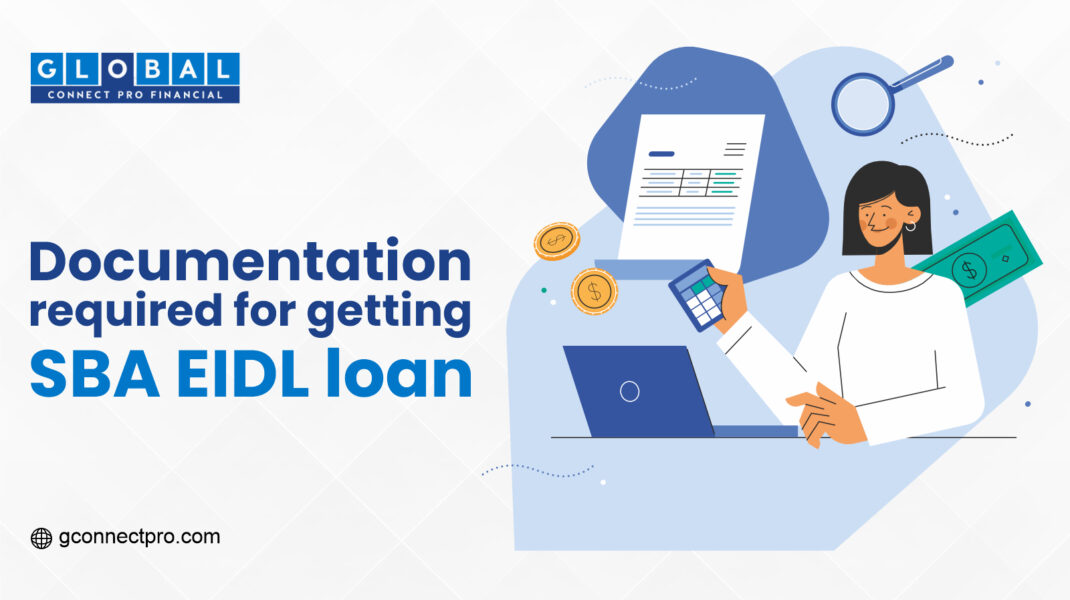Documentation required for getting SBA EIDL loan

If you’re a small business owner in need of financial assistance, the Small Business Administration’s Economic Injury Disaster Loan (EIDL) program can be a lifeline during challenging times. You must first comply with the documentation requirements before you may utilize this helpful resource. In this guide, we’ll break down the essential paperwork you’ll need to gather to apply for an SBA EIDL loan.
Understanding the SBA EIDL Program
Before we delve into the documentation specifics, let’s briefly review what the SBA EIDL program entails. The EIDL program offers low-interest loans to help cover operating expenses and reduce financial hardships in order to help businesses affected by disasters.
Basic Documentation Requirements
To begin the application process for an SBA EIDL loan, you’ll need to gather several key documents. These typically include:
1. Business Information
Provide detailed information about your business, including its legal name, address, structure (e.g., sole proprietorship, LLC, corporation), and Tax Identification Number (TIN) or Employer Identification Number (EIN). Be prepared to furnish documentation that verifies your business’s existence and legitimacy, such as business licences, permits, or registration certificates.
2. Financial Statements
Make sure your business’s balance sheets, income statements, and cash flow projections are all accurate. These documents offer insight into your business’s financial health and help the SBA assess your eligibility for an EIDL loan. If available, provide historical financial data to demonstrate your business’s performance over time.
3. Personal Financial Information
As a small business owner, you’ll likely need to provide personal financial information as part of the application process. Bank statements, information about your assets and liabilities, and personal tax returns may be included in this. Your overall financial situation and your ability to repay the loan are assessed by the SBA using this information.
4. Loan Application Forms
Complete the necessary loan application forms provided by the SBA. Usually, these forms call for a great deal of information about your business, its past financial transactions, and loan objectives. Be thorough and accurate when filling out these documents to expedite the review process.
Additional Documentation for Specific Situations
Depending on your business’s circumstances, you may need to provide additional documentation to support your loan application. Some common scenarios include:
1. Disaster Impact Documentation
If your business has been adversely affected by a disaster, such as a natural calamity or public health emergency, you may need to provide documentation that illustrates the extent of the damage. This could include photographs, repair estimates, insurance claims, or other relevant evidence.
2. Collateral Documentation
In some cases, the SBA may require collateral to secure the loan. If you’re pledging assets as collateral, be prepared to provide documentation that verifies ownership and demonstrates the value of the collateral. This could include property deeds, vehicle titles, or appraisals.
3. Legal Documentation
Depending on your business’s legal structure, you may need to provide additional legal documentation, such as partnership agreements, articles of incorporation, or operating agreements. These documents help in creating the legal foundation for your business and might be necessary in order to apply for a loan.
Tips for Success
To increase your chances of success when applying for an SBA EIDL loan, consider the following tips:
1. Be Organized
Gather all required documentation and organize it neatly before starting the application process. This will ensure that everything you need to correctly complete your application is there and will make things go easier.
2. Double-Check Accuracy
Review your documentation carefully to ensure accuracy and completeness. Any discrepancies or missing information could delay the processing of your loan application.
3. Seek Assistance if Needed
If you’re unsure about any aspect of the application process or documentation requirements, don’t hesitate to seek assistance. Reach out to the SBA or consult with a financial advisor or small business consultant for guidance.
Conclusion:
Small businesses experiencing financial difficulties may find much-needed financial relief by getting an SBA EIDL loan. You can apply with confidence and improve your chances of getting the funding your business needs to succeed if you are aware of the documentation requirements and carefully prepare the required paperwork.


Write a reply or comment
You must be logged in to post a comment.